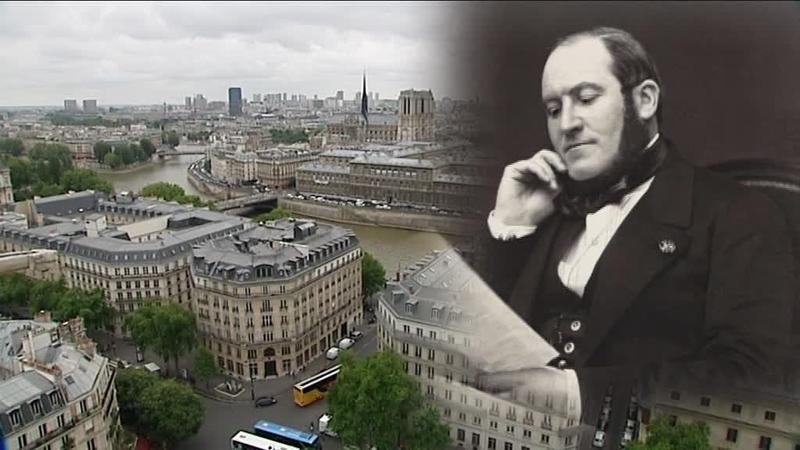Baron Haussmann: How Architecture Ended The French Revolutions
By | December 5, 2019

Today, the romance of Paris monopolizes all other aspects of the original City of Love. Whether couples intertwine beneath the Eiffel Tower's famed arch or etch their initials into a lock on the Ponts des Arts bridge, the joyous atmosphere of love envelopes the city, but Paris's vaunted alleyways and roundabouts might tell a different story if streets could talk.
Certainly, a man named Georges-Eugène Haussmann, also known as Baron Haussmann, would share a much colder story about the avenues of Paris. That's because Baron Haussmann was responsible for ending the seemingly endless revolutions and revolts that plagued Paris for so many years, but not with some genius stroke of diplomacy. He did it with architecture.

The Problem
During the 19th century, Paris was under siege, not by a foreign army but its own people. Parisians couldn't agree whether they supported dictatorships, democracy, or other, and by 1870, six different regimes were pulled down by massive riots and rebellions. By the time Napoleon III declared himself emperor in 1852, someone finally noticed a key element of the various revolutions: the streets.

If You Build It, They Will Riot
In the 19th century, central Paris was a spiderweb of narrow streets that could be easily barricaded with nothing more than the furniture from the neighborhood's homes. According to historian Mark Traugott, the 1830 revolution saw over 4,000 makeshift barricades erected. The February Revolution of 1848 involved more than 6,000! These roadblocks were instrumental in deterring police forces and the military from quelling these uprisings, so Napoleon III resolved to do something about Paris's notoriously narrow pathways before another revolution brought him down. Enter Baron Haussmann.

Directing From On High
Baron Haussmann would be the first to tell you that he was no architect. In fact, he referred to himself as an "artist-demolitionist," so naturally, his preferred method of fixing the cramped neighborhoods was to knock everything down. Unfortunately, he also rarely visited the neighborhoods he so flagrantly destroyed. Barking orders from the comfort of his desk was the Baron's favored style.

Broad Boulevards Through Paris
Over 17 years, Haussmann knocked down more than 12,000 buildings. Many of those edifices were located in the poorer neighborhoods, which coincidentally happened to be where much of the violent turmoil in the city took place. By forcing wide promenades through the city, Haussmann put an end to the rampant barricading, allowing police to break up riots more easily.
Of course, many people weren’t happy with the change, seeing it as an imperialist means to silence dissent. On the other hand, Haussmann also created 27 parks and squares, improved the disastrous sewage and public transportation systems, and even built aqueducts to supply Paris with clean drinking water. Palais Garnier, home of the Opéra National de Paris, and the Les Halles marketplace wouldn't exist without Haussmann. The broad boulevards lined with bright streetlights housed the cafes and shops that inspired artists to lounge about during absinthe hour.

Nobody Likes Change
In all, Haussmann's reconstruction of Paris ran up a bill of roughly 75 billion euros in today's money and turned the historic city upside down for nearly two decades. As a result, public opinion of his work was overwhelmingly negative. His Republican opponents detested the destruction of Paris and the tearing down of many of its historic neighborhoods. Prior to Haussmann, many neighborhoods housed both rich and poor, so he was also blamed for the increased separation of economic classes.

The Fall Of Haussmann
Eventually, the public pressure wore the Emperor down, and he offered the Baron a variety of exit strategies. Haussmann declined all of them. The proud artist-demolitionist thought that if he stepped down, people would assume he had erred in his work. Eventually, Napoleon III fired him.

Mixed Reviews
Today, Paris is considered by many the most beautiful city in the world, and much of that is thanks to Georges-Eugène Haussmann. A few of his critics, like philosopher Jules Simon, ultimately changed their tune on Haussmann's work. As Simon said in 1882, "He tried to make Paris a magnificent city and he succeeded completely. He introduced into his beautiful capital trees and flowers and populated it with statues."

No Good Deed Goes Unpunished
Historian Patrice de Moncan detests the criticism that Haussmann's work still receives today. "Haussmann has been portrayed as this almost sinister figure, only out to enrich himself and with his fingers in the till," de Moncan has said. "Haussmann was never forgiven or recognized in his lifetime in France and still isn't. If I give a conference here, people groan when I talk about him. But what he did was phenomenal; he was the world's first modern urban developer. Everyone who came to Paris for the universal exhibitions, including Queen Victoria, was astonished by the transformation of the city. In 1867, there was a meeting of European architects in Germany at which Haussmann was hailed as a pure genius; a brilliant modern urban developer. Yet all that was said about him back home was that he was a crook."
Ultimately, the proof is in the pudding. If you've been lucky enough to see Paris, you know it's some pretty tasty stuff.

